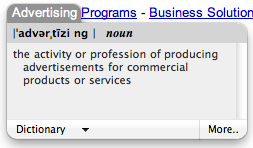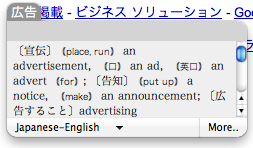Deduping files in Mac OS X #
While recovering data, Photorec terminated prematurely with a "segmentation fault" error. Data Rescue was run on the same drive, and while it completed successfully, I wanted to merge and dedupe the files recovered by both apps.
For deduping, Adrian Lopez's open source fdupes was used (sudo port install fdupes*). It first compares file sizes and MD5 signatures, and then performs a bit-for-bit comparison in case two different files have the same signature.
To process filenames that contain spaces, Geekpoet suggests setting the internal field separator (IFS) to $'\n'
$ IFS=$'\n'
$ for i in $(fdupes -f ./); do echo deleting: $i; rm $i; done
I used the single line option (-1) and xargs instead:
$ fdupes -rf1 ./ | xargs rm
The Big Mean Folder Machine then merged (and automatically renamed where necessary) the remaining 20,000+ files into a single directory. However, the Finder choked when opening the directory, so two new directories were created and files moved like so:
$ find ./ -size -128k -exec mv {} ../small/ \;
$ find ./ -size -1024k -exec mv {} ../medium/ \;
Since the remaining files were all over 1024k, the directory was simply renamed to "large".
* Use MacPorts, avoid DarwinPorts .com.
/mac | Dec 24, 2010
LAN instant messaging #
- IP Messenger (free & open source) In continual development since 1996, this tiny (164k), serverless LAN messenger offers file/folder transfer, RSA/Blowfish encryption, and more. *nix, OS X, iOS, and Java ports also available.
- Softros LAN Messenger (shareware) Interface is similar to (but much cleaner than) Internet messaging apps like Skype, Yahoo! Messenger, and Windows Live Messenger. Features include file transfer, AES encryption, offline messaging, message logging, and serverless operation.
/windows | Dec 12, 2010
nweb: a tiny, safe Web server (static pages only) #
"Have you ever wanted to run a tiny, safe Web server without worrying about using a fully blown Web server that could cause security issues? Do you wonder how to write a program that accepts incoming messages with a network socket? Have you ever just wanted your own Web server to experiment and learn with?
Well, look no further -- nweb is what you need. This is a simple Web server that has only 200 lines of C source code. It runs as a regular user and can't run any server-side scripts or programs, so it can't open up any special privileges or security holes."
(via Mohan)
/nix | Dec 12, 2010
Kindle Terminal #
Luigi Rizzo has crafted a standalone Kindle terminal in C that allows you to run a shell from the Kindle's keyboard and screen. No need to rely on web-based terminals any more. (via Hacker News)
UPDATE: Installing Luigi Rizzo's Standalone Kindle Terminal
/eink | Dec 11, 2010
Recover Internet Explorer autocomplete form strings and more from offline systems #
Passcape Internet Explorer Password Recovery (PIEPR) recovers data cached by Internet Explorer, including: cached credentials, FTP passwords, AutoForm and AutoComplete fields, AutoComplete passwords, synchronization passwords, Identities, and Content Advisor passwords. Recovery can be run on live or offline (via ntuser.dat) systems. See also Recovering Internet Explorer passwords: theory and practice.
UPDATE: Firefox's autocomplete form strings can be found in formhistory.sqlite (which is located in the user's profile folder). Easily view and extract data with the free and open source SQLite Database Browser.
/windows | Dec 08, 2010
Over 2,000 years later, science catches up with the Stoics #
Radiation Rings Hint Universe Was Recycled Over and Over:
"Most cosmologists trace the birth of the universe to the Big Bang 13.7 billion years ago. But a new analysis of the relic radiation generated by that explosive event suggests the universe got its start eons earlier and has cycled through myriad episodes of birth and death, with the Big Bang merely the most recent in a series of starting guns."
The Stoics by John M. Rist:
"Each of the early Stoics taught that the universe, after certain definite periods of time (whose duration is never specified), dissolves into fire and so 'purifies' itself ... We can see how this process would have been outlined by Zeno: the universe originally generated from creative fire (pyr technikon); after a period of time it resolved itself once again into pure fire, whence another universe was in turn generated from the pure creative fire. The cosmic process is therefore an infinite series of finite phases of alternate diakosmesis and ekpyrosis."
/misc | Nov 30, 2010
Editing or deleting file metadata in OS X #
The Finder's Get Info window does not allow changing most metadata, like the URL in "Where from" as shown here:
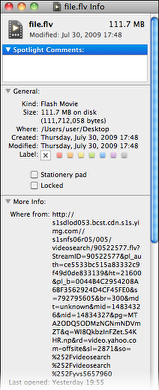
mdls can list a file's metadata attributes:
$ mdls file.flv
kMDItemContentCreationDate = 2009-07-30 17:48:06 -1000
kMDItemContentModificationDate = 2009-07-30 17:48:06 -1000
kMDItemContentType = "com.adobe.flash.video"
...
kMDItemWhereFroms = (
"http://s1sdlod053.bcst.cdn.s1s.yimg.com//s1snfs06r05/005/videosearch/90522577.flv..."
)
but cannot edit them. For editing, we need xattr:
$ xattr -l file.flv
com.apple.metadata:kMDItemWhereFroms:
00000000 62 70 6C 69 73 74 30 30 A1 01 5F 11 01 7F 68 74 |bplist00.._...ht|
00000010 74 70 3A 2F 2F 73 31 73 64 6C 6F 64 30 35 33 2E |tp://s1sdlod053.|
00000020 62 63 73 74 2E 63 64 6E 2E 73 31 73 2E 79 69 6D |bcst.cdn.s1s.yim|
00000030 67 2E 63 6F 6D 2F 2F 73 31 73 6E 66 73 30 36 72 |g.com//s1snfs06r|
00000040 30 35 2F 30 30 35 2F 76 69 64 65 6F 73 65 61 72 |05/005/videosear|
00000050 63 68 2F 39 30 35 32 32 35 37 37 2E 66 6C 76 3F |ch/90522577.flv?|
00000060 53 74 72 65 61 6D 49 44 3D 39 30 35 32 32 35 37 |StreamID=9052257|
...
$ xattr -w "com.apple.metadata:kMDItemWhereFroms"
"http://topdocumentaryfilms.com/journey-edge-universe/" file.flv
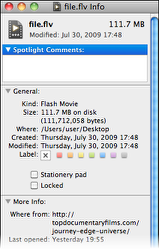
-d can be substituted for -w to delete the data. More info on OS X metadata and extended attributes
/mac | Nov 30, 2010
Cracking OS X keychain files #
KeychainRecovery is a free tool to recover OS X keychain file passwords. (via What's My Pass?)
Especially useful after having reset a user's password via installer DVD or single user mode. The default keychain file (login.keychain) is normally located in ~/Library/Keychains.
It is not necessary to run the installer; simply extract KeychainRecovery.app from Archive.pax.gz found inside KeychainRecovery.pkg.
If the OS X dictionary (/usr/share/dict/words) does not meet your needs, you might want to generate a custom wordlist with crunch, try a wordlist containing the 500 most common passwords, or purchase Openwall's wordlist collection.
UPDATE: Forgot about crowbarKC, which has been around longer and was slightly faster than KeychainRecovery in my informal testing. John the Ripper is much faster than both, but it requires a bit more effort to install (paid binaries also available) and extract hashes. See Cracking Mac OS X Passwords and Installing John the Ripper version 1.7.3.4 on Mac OSX Snow Leopard for details.
/mac | Nov 25, 2010
Installing Microsoft Office 2011 / uninstalling Office 2008 #
The Microsoft Office 2008 installer automatically searched for and offered to remove previous versions of Office. Office 2011 does not. If you'd like to cleanly uninstall Office 2008 before installing 2011, simply run "Remove Office.app" found here: /Applications/Microsoft Office 2008/Additional Tools/Remove Office/
/mac | Nov 24, 2010
Newly added to OS X page #
ThumbsUp 4.5 [512k] Batch create thumbnails via drag-and-drop 📺
(via CyberNet News)
/mac | Nov 24, 2010
Delete temp files for all users #
Garrett's script 💾 clears the following directories for all users:
Windows XP:
%userprofile%\Local Settings\Temp
%userprofile%\Local Settings\Temporary Internet Files
Windows Vista/7:
%userprofile%\AppData\Local\Temp
%userprofile%\AppData\Local\Microsoft\Windows\Temporary Internet Files
However, in order for this to work on user profiles with private folders enabled, you'll need to run the script under the LocalSystem account (LSA).
/windows | Oct 24, 2010
Coworking spaces continue to grow #
From 2005:
As more and more people continue to follow their joy, leave unpleasant 9 to 5 jobs, and start their own businesses, cool spaces like theOffice and Paragraph will likely grow, providing clean, quiet environments to get work done outside of the home. Kinkos and Starbucks are swell, but they pale in comparison to the atmosphere which these places seem to offer. Rather reminiscent of the wonderful Diogenes Club.
Indeed, the desk sharing / coworking trend has grown apace; it is now easier than ever to find such havens thanks to sites like loosecubes ("rent a desk or a meeting room for a day, week, or month") and Desks Near Me ("helping freelancers get out of the house").
/misc | Oct 17, 2010
Random Kindle notes #
- Instapaper is a must
- If you are using a terminal, make lynx readable by losing the black background: simply comment out the two lines below from /etc/lynx-cur/lynx.lss
normal: normal: lightgray:black
default: normal: white:black
- Google Reader's mobile site defaults to opening links in a new window, which the Kindle does not support. Fix this by heading to Feeds > Settings and uncheck "Open links in a new window". (Note to Jeff: instead of Web Browser could not open this link because opening multiple windows is not supported, why not just ignore the target option and open the link in the same window?)
/eink | Oct 17, 2010
Batch create Kindle collections from document folders #
MobileRead user "collection" created a Python script (KindleCollections.py AKA KindleForResearch.py 💾) to turn directories of PDFs into collections. It worked equally well for a bunch of TXT files (actually HTML files renamed due to Kindle restrictions) by simply replacing every occurrence of "pdf" with "txt" in the script.
/eink | Oct 17, 2010
Disable automatic restart after Windows 7 updates #
Open gpedit.msc and enable Computer Configuration/Administrative Templates/Windows Components/Windows Update/No auto-restart for scheduled Automatic Update installation
or
add NoAutoRebootWithLoggedOnUsers DWORD value to HKEY_LOCAL_MACHINE\SOFTWARE\Policies\Microsoft\Windows\WindowsUpdate\AU and assign value data of 1.
More info: How to configure automatic updates by using Group Policy or registry settings
/windows | Oct 16, 2010
The definitive guide for Linux command line newbies #
The Linux Command Line by William E. Shotts, Jr. is a clean, thorough introduction to Linux shell commands and scripts. Download the book for free and you may soon find yourself purchasing a printed copy (I did).
/nix | Oct 10, 2010
An orrery for your pocket, projector, wrist, or table #
Traveling through the solar system is easier with an orrery:
Solar Walk (iPhone/iPod Touch/iPad)
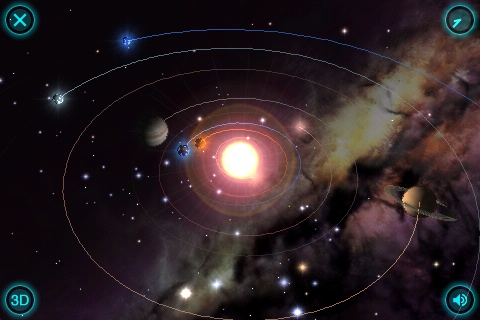
Seeker (Mac/Win)

Christiaan van der Klaauw's Astronomical Watches

Brian Greig, orrery maker
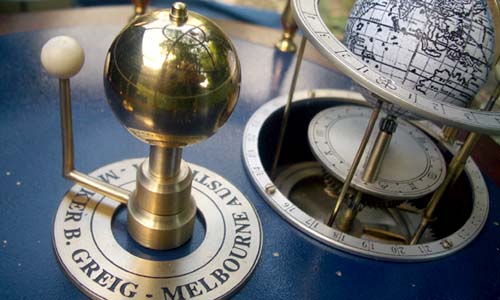
UPDATE: More tools for navigating the solar system:
The mini3 original orrery kit by TheOrreryShop is made of wood, brass and acrylic.

Orrery is an old-fashioned brass orrery for Windows, OS X, iOS, and Android.
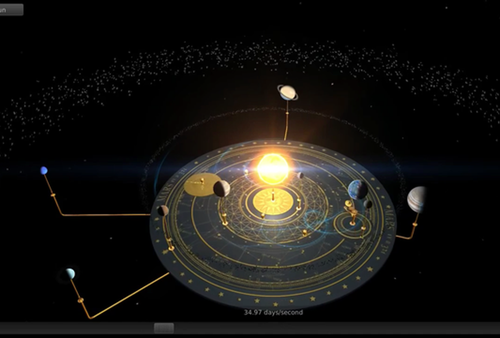
Emerald Observatory for iPad displays a wealth of astronomical and chronographic information.

The Orrery Kit is built from a number of sheets of heavy-duty card.
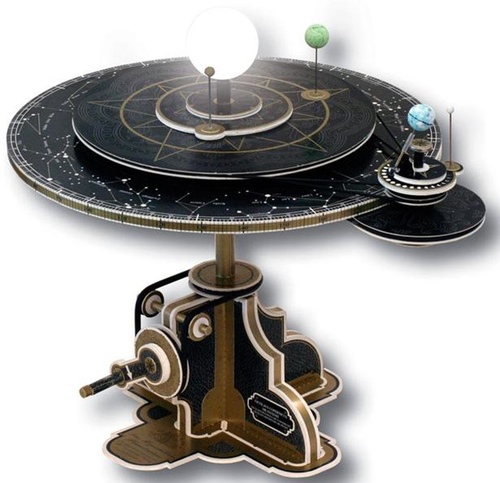
dD Orrery by Piotr Kaczmarek; available as a Flash application or screensaver for Mac/Win
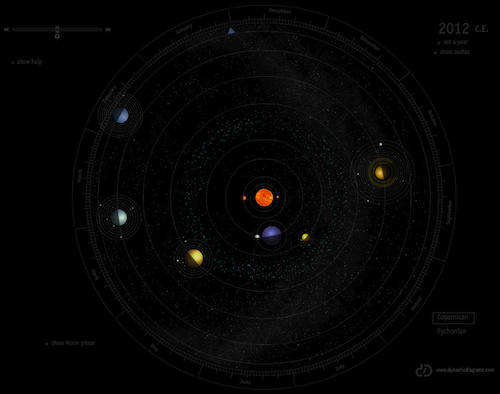
Solar System Wallpaper by Adam Dorman

3D Solar System Web
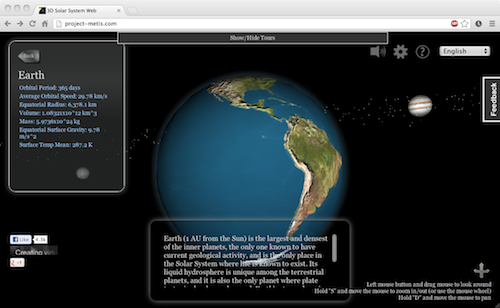
/misc | Oct 03, 2010
Import 3GP files into iMovie '08 #
Attempting to import 3GP video clips into iMovie '08 via "File" > "Import Movies..." fails without any messages. Dragging a 3GP file onto an event in the Event Library fails with the following message:
Import File
The file will not be imported.
It is not compatible with iMovie.
The solution is simply to change the file extension from 3GP to MP4 and then import via either method.
/mac | Oct 02, 2010
Text editing / shell access on a Kindle 3 #
Some possible alternate titles for this post:
- Editing text on a Kindle 3
- Terminal / console access on a Kindle 3
- Ubuntu Linux on your Kindle 3
- K3 SSH client
UPDATE: Installing Luigi Rizzo's Standalone Kindle Terminal
The Kindle 3's WebKit browser allows access to a host of web-based text editors (MyTextFile, vian, etc) and consoles (Ajaxterm, Anyterm, Web Console, shellinabox, etc).
Why bother? Because reading electronic text on an e-ink screen is far more pleasant than on any other device (including the Pixel Qi, which, however, is a great LCD for outdoor use).
After installing shellinabox on an Ubuntu Linux VM, shell access from the Kindle couldn't be simpler:
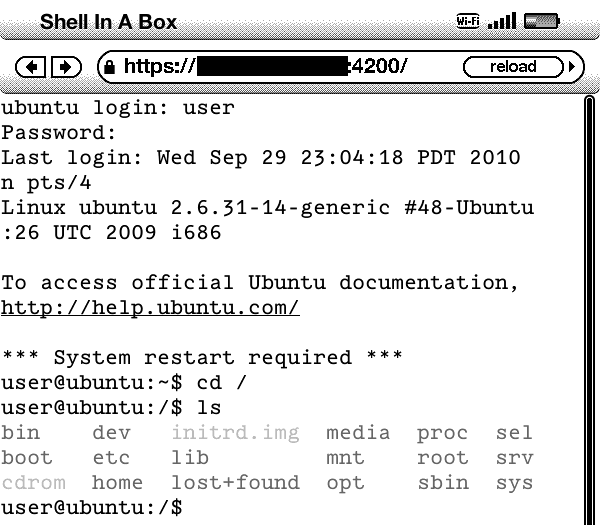
Since the Kindle keyboard lacks Esc and Ctrl, stick with simple text editing tools like cat and ed/ex instead of nano and vi (though there are ways to avoid the escape key in vi, including Alt shortcuts like Alt+M to jump to middle of page and switch to command mode):
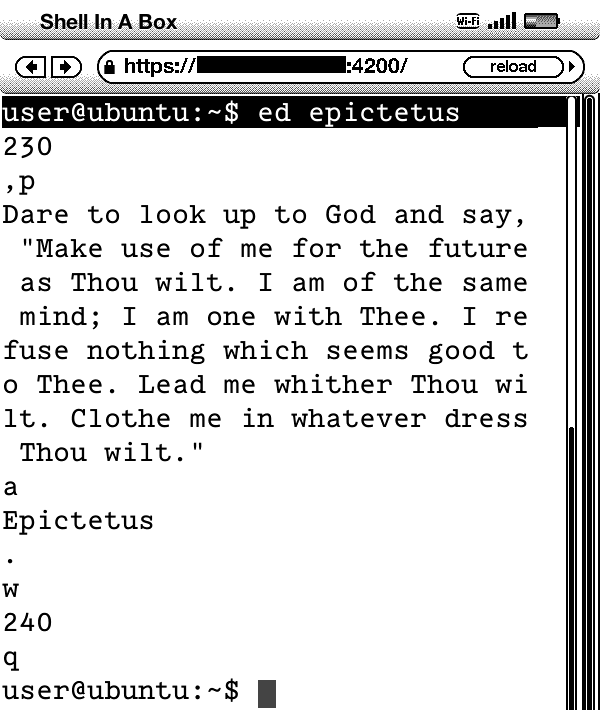
ed/ex resources:
It's easy to get really excited about ed:
Of course, on the system I administrate, vi is symlinked to ed. Emacs has been replaced by a shell script which 1) Generates a syslog message at level LOG_EMERG; 2) reduces the user's disk quota by 100K; and 3) RUNS ED!!!!!!
...
When I use an editor, I don't want eight extra KILOBYTES of worthless help screens and cursor positioning code! I just want an EDitor!! Not a "viitor". Not a "emacsitor". Those aren't even WORDS!!!! ED! ED! ED IS THE STANDARD!!!
/eink | Sep 30, 2010
Find total number of iCal events #
John Maisey kindly shared the following AppleScript to find the total number of events in iCal:
set myText to "Count of events in iCal's calendars." & return
tell application "iCal"
repeat with myCal in calendars
set myText to myText & return & (name of myCal) & ": " & (count events of myCal)
end repeat
end tell
display dialog myText
/mac | Sep 01, 2010
Newly added to the Docs section: #
Mounting partitions from full disk images. Covers several methods for mounting with or without a specified offset.
/nix | Aug 29, 2010
Running Roadkil's Unstoppable Copier in Ubuntu Linux #
Roadkil's Unstoppable Copier can copy files from failing media while skipping files that are corrupt or unrecoverable. The Windows version has been listed for many years; here's how to get the Linux version working under Ubuntu 9.10:
- Download the Linux version
- Extract unstopcp from unstopcp.gz
- chmod +x unstopcp or from the GUI: right click unstopcp > Properties > Permissions > check "Allow executing file as a program" > Close
- Kubuntu users (or others running KDE) can simply double click unstopcp to launch it. GNOME users may find nothing happens after double clicking. Running unstopcp from the Terminal reveals: unstopcp: error while loading shared libraries: libqt-mt.so.3: cannot open shared object file: No such file or directory. libqt-mt is the Trolltech Qt library, necessary for running KDE3 apps.
- Head to System > Administration > Synaptic Package Manager, do a quick search for "libqt3-mt" and install it.
- Now GNOME users should be able to launch unstopcp successfully:
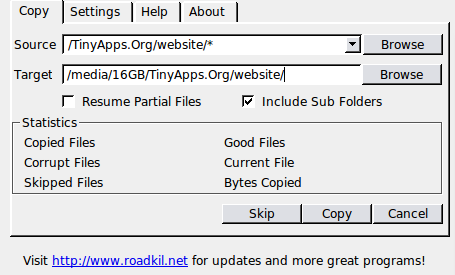
- Notes:
- Logging and auto skipping of damaged files can be enabled under the "Settings" tab.
- Had to launch with sudo in order to copy user files from an OS X HFS+ volume (as permissions are maintained across platforms).
- To copy directories instead of a single file, put a trailing asterisk in the Source path (see screenshot above), otherwise nothing will be copied.
/nix | Aug 24, 2010
Generate HTML index page of images or other HTML files #
- 🌱 Pich [7k] + Generates an HTML page of all images (JPG, GIF, PNG) in the current directory and (optionally) subdirectories. 📺
- 🌱 HTI (Hyper-Text Index) 0.5 [16k] {S}+ Generates an index page of HTML files. Includes titles, meta descriptions, and H1 - H6 headings. ANSI C source code available on request, on a "don't laugh" basis. 📺
(via Mike Mills)
/windows | Aug 23, 2010
Dwelling #
"Small rooms or dwellings set the mind in the right path, large ones cause it to go astray."
—Leonardo da Vinci, MS. 2038, Bib. Nat. 16 r.
"For my part, as I grow older I am more and more inclined to reduce my baggage, to lop off superfluities. I become more and more in love with simple things and simple folk—a small house, a hut in the woods, a tent on the shore. The show and splendor of great houses, elaborate furnishings, stately halls, oppress me, impose upon me. They fix the attention upon false values, they set up a false standard of beauty; they stand between me and the real feeders of character and thought."
—John Burroughs, The Gospel of Nature
"Simplicity of life, even the barest, is not a misery, but the very foundation of refinement."
—William Morris, The Prospects of Architecture
"There is an old story about a famous rabbi living in Europe who was visited one day by a man who had traveled by ship from New York to see him. The man came to the great rabbi's dwelling, a large house on a street in a European city, and was directed to the rabbi's room, which was in the attic. He entered to find the master living in a room with a bed, a chair, and a few books. The man expected much more. After greetings, he asked, 'Rabbi, where are your things?' The rabbi asked in return, 'Well, where are yours?' His visitor replied, 'But, Rabbi, I'm only passing through,' and the master answered, 'So am I, so am I.'"
—Jack Kornfield, A Path With Heart
"Turn yourself into gold and then live wherever you please."
—Sri Ramakrishna, The Gospel of Sri Ramakrishna
/misc | Aug 20, 2010
OS X: Mount disks as read only or block automounting altogether #
Aaron Burghardt's open source Disk Arbitrator provides a simple GUI for changing OS X's automount behavior. Automounting can be disabled completely (especially handy for drive imaging / data recovery via ddrescue, etc) or mounts can be forced as read-only (for forensics, etc, though a hardware write-blocker is still recommended).
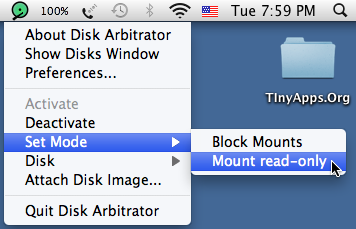
This little app replaces the following hacks I've been using to prevent automounting of USB / Firewire drives in OS X:
biovizier's sudo chflags uchg /Volumes
Ryan Kubasiak's backup and removal of /etc/mach_init.d/diskarbitrationd.plist for Tiger. This one was new to me, and Ryan kindly informs us that it is the only way to disable Disk Arbitration under 10.4.
Charles Edge's launchctl stop 0×10abe0.diskarbitrationd for Leopard
Matt's sudo launchctl unload /System/Library/LaunchDaemons/com.apple.diskarbitrationd.plist for Snow Leopard. This method (and probably the one above) has the unfortunate side effect of disabling diskutil: "Unable to run because unable to use the DiskManagement framework. Common reasons include, but are not limited to, the DiskArbitration framework being unavailable due to being booted in single-user mode."
Updates
Aaron kindly replied to my email, pointing out that the "stop" command (since removed) isn't necessary in the fourth method above and that pausing/resuming diskarbitrationd with SIGSTOP and SIGCONT offers another option (though it too disables diskutil):
$ sudo launchctl list | grep diskarbitrationd
188 - com.apple.diskarbitrationd
$ sudo kill -SIGSTOP 188 # pauses diskarbitrationd, disabling automount
$ sudo kill -SIGCONT 188 # resumes diskarbitrationd, reenabling automount
More on disabling Disk Arbitration from Apple Examiner.
Mount USB drives as read-only in Windows
As of mid 2024, Disk Arbitrator development has been stalled for a number of years; see Aaron Beckley's fork with patches to allow compiling under macOS 14.5 and Xcode 15.4.
/mac | Aug 17, 2010
Web browser security analysis #
Qualys BrowserCheck checks your browser as well as browser plugins and add-ons to identify insecure and out-of-date versions that put you at risk. Runs under Windows / Mac OS X, and detects:
- Windows OS support expiration
- Browser version (IE 6.0+, Firefox 3.0+, Chrome 4.0+)
- Adobe Flash Player
- Adobe Reader 5.x and above
- Adobe Shockwave Player
- Apple Quicktime
- BEA JRockit
- Microsoft Silverlight
- Microsoft Windows Media Player
- Real Player
- Sun Java
- Windows Presentation Foundation (WPF) plug-in for Mozilla browsers
/misc | Aug 14, 2010
OS X: Get OS version info in Terminal #
$ sw_vers
ProductName: Mac OS X
ProductVersion: 10.6.4
BuildVersion: 10F569
$ sw_vers -productVersion
10.6.4
Especially handy when resetting a password in single user mode, since the method varies based on which version of OS X is running.
Update 1
Here's another way to check; great for use on offline OS X installs:
$ grep -2 ProductVersion /Volumes/OfflineVolumeName/System/Library/CoreServices/SystemVersion.plist
<key>ProductUserVisibleVersion</key>
<string>10.11.6</string>
<key>ProductVersion</key>
<string>10.11.6</string>
Update 2
Update 3
system_profiler can query all sorts of hardware information, e.g., system_profiler SPSerialATADataType | grep "Medium" to check whether the internal drive is Rotational or Solid State. Run system_profiler -listDataTypes to list the available datatypes; see Get OS X System Info from the Command Line for more information.
Update 4
In Linux, find model identifier and serial number via dmidecode -t system.
Update 5
Under macOS 10.12 Sierra or higher, retrieve serial number via ioreg -l | grep IOPlatformSerialNumber.
Update 6
Identify the source Mac model of a removed drive: grep Hardware: /Volumes/foo/private/var/log/install.log
/mac | Aug 14, 2010
Getting Google to index your Blosxom blog correctly #
I originally asked (and answered) this question on Doctype, and reproduce it here (with slight modifications) for other Blosxom users:
Blosxom creates multiple copies of the same entry in different directories. For example, a given entry would have:
- its own unique URL
- a place in the topic index
- a place in the month index
- a place in the year index
I wanted Google to prefer the first entry, since it makes finding content easier. I tried using robots.txt to exclude indexing of the topic and date indexes, but then Google ignores or cannot find the unique URLs either.
I ended up adding
<meta name="robots" content="noindex, follow">
to the blog index pages via this one-liner
find -name index.html -print0 | xargs -0 perl -pi -e 's/<head>/<head>\n<meta name="robots" content="noindex, follow">/g'
at the end of my static publishing routine.
That way, search engines can find the canonical URLs, but will ignore all of the topic and date index pages.
UPDATE 1: Just found someone with the same issue who also solved it with "noindex, follow".
UPDATE 2: After a few weeks Google was properly indexing my site, and continues to do so after more than a month.
UPDATE 3: Another report of using robots meta tag to fix search engine indexing.
/blosxom | Aug 13, 2010
OS X: Printing in grayscale #
A quick search turned up a number of guides on how to print in greyscale under OS X, but they all entailed saving to PDF first and then opening in Preview. The following method worked directly from the print dialog in Snow Leopard (image) with a printer driver that did not include a native grayscale option:
- Paper Type/Quality
- Color Options
- Grayscale
- Black Print Cartridge Only
For easy access in the future, just click the "Presets:" pop-up menu and save as "grayscale" or what have you.
/mac | Aug 07, 2010
Free web app vulnerability scanning #
Zapotek is kindly offering free vulnerability scanning for web applications using Arachni, his open source vulnerability scanner written in Ruby and under active development. Zapotek is also the author of raw2vmdk (mentioned last month), which can mount raw images as VMDK virtual disks.
/nix | Jul 14, 2010
Cross platform testing and benchmarking suite #
The Phoronix Test Suite is a testing and benchmarking platform that runs under Linux, OpenSolaris, Mac OS X, Windows 7, and BSD (a Linux-based live DVD/USB version is also available). In addition to detailed system software and hardware information, Phoronix can report CPU temperature, battery power consumption, disk read/write speeds, etc.
/nix | Jul 09, 2010
Skype Test Call contact missing #
Skype's sound set up guide offers the following suggestion:
"To test your sound set up in any version of Skype, use the Skype Test Call robot - find it in your contact list."
Sadly, it was missing from my contact list, and searching the directory for "skype test", "skype test call", etc returned a vast number of fake test call accounts. The real Skype Test Call robot username is echo123.
/misc | Jul 09, 2010
Malware analysis and forensic investigation environments #
- Mass Malware Analysis: A Do-It-Yourself Kit - "Theory, practice and a construction manual for an automated analysis station for malware using trivial and free instruments."
- Minibis - "Software and tips to easily build up an automated malware analysis station based on a concept introduced in the paper 'Mass Malware Analysis: A Do-It-Yourself Kit'".
- REMnux "is a lightweight Linux distribution for assisting malware analysts in reverse-engineering malicious software. The distribution is based on Ubuntu and is maintained by Lenny Zeltser."
- SANS Investigative Forensic Toolkit (SIFT) Workstation "is a VMware Appliance that is pre-configured with all the necessary tools to perform a detailed digital forensic examination. It is compatible with Expert Witness Format (E01), Advanced Forensic Format (AFF), and raw (dd) evidence formats. The brand new version has been completely rebuilt on an Ubuntu base with many additional tools and capabilities that can match any modern forensic tool suite."
(via The H Security and Darknet)
/nix | Jul 09, 2010
Safari 5 hearts OpenDNS #
There is no shortage of reports on Safari 5's interminable page load times:
The "fix" seems to be switching DNS servers to OpenDNS. In my own informal testing, Safari 5 was basically unusable with Google's Public DNS: pages would either refuse to load altogether, or would take much longer than usual. Simply switching to OpenDNS servers fixed the problem instantly. Switching back and forth between Google Public DNS and OpenDNS (along with testing page load times via Webmonkey Stopwatch) confirmed Safari's bias.
/mac | Jun 30, 2010
Flash Cookies #
When clearing your web browser's cache / cookies / temp files / etc, don't forget to wipe Flash cookies (*.SOL files, properly known as Local Shared Objects, or LSO) too. OS X users will find them buried within subfolders in
~/Library/Preferences/Macromedia/Flash Player/#SharedObjects/ and
~/Library/Preferences/Macromedia/Flash Player/macromedia.com/support/flashplayer/sys/
Be aware that Flash cookies are not deleted by Safari's "Reset Safari", Opera's "Delete Private Data", Firefox's "Clear Recent History", or any other browser's cleaning method. (Iain Cheyne kindly points out that the BetterPrivacy add-on for Firefox can manage Flash cookies.)
/misc | Jun 29, 2010
Smartphone remote kill switches #
or, "Why I still use a Palm Treo 755p":
/misc | Jun 26, 2010
Convert raw disk image or physical disk to virtual machine #
"Live View is a Java-based graphical forensics tool that creates a VMware virtual machine out of a raw (dd-style) disk image or physical disk. This allows the forensic examiner to 'boot up' the image or disk and gain an interactive, user-level perspective of the environment, all without modifying the underlying image or disk. Because all changes made to the disk are written to a separate file, the examiner can instantly revert all of his or her changes back to the original pristine state of the disk. The end result is that one need not create extra 'throw away' copies of the disk or image to create the virtual machine.
Live View is capable of booting
- Full disk raw images
- Bootable partition raw images
- Physical Disks (attached via a USB or Firewire bridge)
- Specialized and closed image formats (using 3rd party image mounting software)
Containing the following operating systems
- Windows 2008, Vista, 2003, XP, 2000, NT, Me, 98
- Linux (limited support)
Behind the scenes, Live View automates a wide array of technical tasks. Some of these include: resolving hardware conflicts resulting from booting on hardware other than that on which the OS was originally installed; creating a customized MBR for partition-only images; and correctly specifying a virtual disk to match the original image or physical disk."
Related projects:
- raw2vmdk - Mount raw images as VMDK virtual disks
- xmount - Convert on-the-fly between multiple input and output harddisk image types
- mbrChunker - Converts raw dd images to vmdk files (as of 20100812, this is now dd2vmdk)
UPDATE: In my testing, Live View 0.7b / VMWare Server 1.x (2.x not supported by Live View) on a Windows 7 64-bit host did not work, even after trying a number of suggestions in the forums.
Switched to a Windows XP host, and successfully tested with a raw disk image of an XP install. However, attempting to use a partition image instead of a full disk image resulted in the following error on boot:
A disk read error occurred
Press Ctrl+Alt+Del to restart
Apparently the MBR is not being written correctly, or perhaps VMWare just doesn't play well with images created from partitions.
Finally, I tried using an IDE drive (Windows XP installed) with two different USB and Firewire bridges, but that also failed:
ERROR> Snapshot Creation Failed
ERROR> Problem preparing partition1 for launch
VM Launch Failed
tl;dr: Windows XP is well-supported as a host, but you may not be able to work with anything other than full disk images.
/windows | Jun 18, 2010
Generate wordlists with crunch #
$ wget http://downloads.sourceforge.net/project/crunch-wordlist/crunch-wordlist/crunch2.4.tgz
$ tar -xvf crunch2.4.tgz
$ cd crunch
-bash: cd: crunch: Permission denied
Let's check the file permissions:
$ stat -c %a crunch
644
Ah! Just need to fix that:
$ chmod 755 crunch
$ cd crunch
$ make
Now we're ready to generate our list. In this example, we'll make a list consisting of every possible combination of 3 letters (both upper and lower case) followed by 2 numbers:
$ ./crunch 5 5 -f charset.lst mixalpha -o list -t @@@%%
Even though we've specified mixalpha as the character set, crunch replaces the percent symbols with numbers. This 80MB, 14060800-line list only took crunch 5 seconds to generate.
/nix | Jun 13, 2010
The Peaceful Mind #
- Nothing, to my way of thinking, is a better proof of a well ordered mind than a man's ability to stop just where he is and pass some time in his own company. -- Seneca
- A peaceful mind is your most precious capital. -- Sivananda
- A man is what he thinks about all day long. -- Ralph Waldo Emerson
- He who always dwells within himself becomes possessed of very ample means. -- Henry Suso
- The man in contemplation is a free man. He needs nothing. Therefore nothing determines or distorts his thought. He does whatever he loves to do, and what he does is done for its own sake. -- Aristotle
/misc | Jun 05, 2010
POP, IMAP, and Exchange client for Android #
K-9 Mail is an open source email client for Android with support for POP, IMAP, and Exchange. K9 has two major benefits over Android's built-in Email app:
- It works
- Option to Bcc a copy of sent mail (ideal for POP accounts)
/misc | May 25, 2010
Newly listed full-screen text editors #
Zeus Poplar kindly sends word of Q10, a full-screen portable text editor. Unlike the previously mentioned WriteMonkey, Q10 does not require .NET.
🌱 Q10 1.2.21 [357k] + Full-screen, portable text editor 📺
UPDATE: Just happened upon another standalone distraction-free text editor on Ghacks:
🌱 Zenedit 1.4 [283k] + Minimalist text editor designed to prevent distractions 📺
/windows | May 23, 2010
Windows Firewall alternative #
Newly added to the Internet page:
GhostWall 1.150 [656k] Windows Firewall alternative ideal for low latency applications. 📺
/windows | May 23, 2010
Ubuntu 10.04: Bypass minimum password length / complexity requirements #
Ubuntu 10.04 is requiring users to create more secure passwords than in previous versions. That is generally a good idea, but there are cases where you might want a simple password (for testing purposes in a VM, etc). The fastest method to bypass the minimum complexity and length requirements is to simply run the passwd command as root:
$ sudo passwd username
I mucked around in /etc/pam.d/common-password and read the man page for pam_unix before just chucking it and going with the above workaround.
/nix | May 18, 2010
Blosxom.com and Blosxom plugin registry listing mirror #
After reading this, I decided to post an archive of Blosxom.com and the Version 2 Plugin Registry Listing, including the code for all 465 plugins (602 counting the various versions):
Those desiring to dig deeper into Blosxom may enjoy Frank Hecker's annotated blosxom.cgi and Rob Reed's annotated Blosxom bundle.
/blosxom | May 14, 2010
Send To SFTP for Mac OS X #
There have been a number of Send To FTP/SFTP apps for Windows, but Nick Jensen's OneWay is the first OS X option I've seen. It allows quick and easy (S)FTP uploads via the Context Menu:
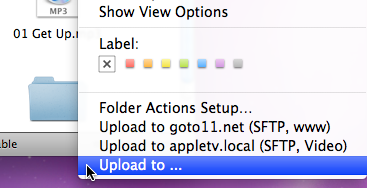
(via Hacker News)
/mac | May 12, 2010
Free PDF to DOC converters #
freewaregenius.com has a detailed review of free online and offline PDF to DOC converters. In my brief and unscientific testing, SmartSoft's lightweight Free PDF to Word Converter was the best for converting a long text-based PDF.
/misc | May 10, 2010
Delete / remove blank pages from a PDF #
The following was originally posted to http://www.accesspdf.com/article.php/20050128092744804. Found a copy on the Wayback Machine, which is apparently not indexed by Google.
Removing Blank Pages from a PDF
Friday, January 28 2005 @ 09:27 AM PST
Contributed by: Admin
Here is an idea for how to remove blank pages from a PDF using pdftotext and pdftk. It is based on a recent posting to comp.text.pdf.
demunn@yahoo.com wrote:
> Hello all,
> Sorry if this is a recurrent question. I'm rendering/printing an HTML
> document from a web-based program to a pdf file. The web-based
> program has minimal features to control pagination, etc. (I know
> web-based print control is relatively primitive) and the outcome is
> unwanted blank pages in the PDF output file.
> Anyway, I'm basically looking for a program that will allow me batch
> process a folder of PDF files and strip out the blank pages. Is there
> any programs or utilities that will do this? Any suggestions are
> greatly appreciated
> DM
Here is one simple idea that assumes that all non-blank pages have
(extractable) text on them.
1. Use pdftotext (from the xpdf project) to convert mydoc.pdf to
mydoc.txt. Pdftotext uses the formfeed character (0x0c) to mark page breaks.
2. Scan mydoc.txt looking for pages with no text. Record these page
indexes (start counting at page 1, not zero).
3. If you find blank pages, use pdftk to remove them. Construct the
pdftk command line using the page indexes you collected in step 2. For
example, to drop page 3, say:
pdftk mydoc.pdf cat 1-2 4-end output mydoc.noblanks.pdf
It shouldn't be too hard to write such a shell script, eh?
Sid Steward
http://www.AccessPDF.com/pdftk/
The Script
Using bash (via MSYS) on my Win2k machine, I have strung some commands together that identify PDF pages with no extractable text on them. I don't say "blank pages," because sometimes a non-blank PDF page has no extractable text on it.
#!/bin/sh
#
# find_textless_pdf_pages.sh
# bash script for MSYS; also requires pdftotext (xpdf);
#
# identify PDF pages that have no extractable text on them;
# linux users might need to omit the -c sed option and then
# drop the 'R' from the sed script;
#
# invoke like so:
# find_textless_pdf_pages.sh mydoc.pdf
#
pdftotext $1 - |
tr "FRfr" "frFR" |
sed -c -n '/^FR$/{ N; /^FRnFR$/a
PageNoText
/^FRnFR$/!a
Page
D; }'
Command Breakdown
pdftotext - converts the input PDF file into text. It uses the formfeed character (f) to mark page breaks.
tr - translates characters. Sed doesn't see non-printing ASCII characters such as f or r (carriage return). So, translate R->r, F->f, and f->F, r->R.
sed - the stream editor. I discuss sed here. If it finds a line that is just "FR", then it looks ahead to see if the next line is also "FR". If it is, then it prints "PageNoText". If it isn't, then it prints "Page". Finally, it uses the D command to continue processing with just the second line of text.
I'll continue working on this script as time permits.
/nix | May 10, 2010
Fujitsu ScanSnap S1300 vs S1500 #
I was debating between the ScanSnap S1300 and S1500 until watching this video. Debate over. For the tl;dw crowd: the S1500 scanned 15 double-sided pages in 30 seconds, while the S1300 took 107 seconds.
/misc | May 10, 2010
Display atime, ctime, and mtime for a file #
$ stat foo
File: foo
Size: 221 Blocks: 8 IO Block: 4096 regular file
Device: 801h/2049d Inode: 540949 Links: 1
Access: (0700/-rwx------) Uid: ( 0/ root) Gid: ( 0/ root)
Access: 2006-12-04 07:00:00.000000000 -1000
Modify: 2006-12-04 07:00:00.000000000 -1000
Change: 2010-05-08 10:01:29.000000000 -1000
stat also accepts wildcards: $ stat *.txt
/nix | May 08, 2010
Boot any and all ISO images from USB drive #
I spent days looking for a way to boot any and all ISO images from a USB drive. I envisioned being able to simply copy any bootable CD or DVD (Windows installers, OS X boot discs, Linux Live CDs and recovery discs like Knoppix, etc) to a USB drive and boot it normally. Some of the possible solutions I found included:
- How to install Windows from USB: WinSetupFromUSB with GUI - Supports multiple Windows XP/2Kx sources in the same partition; BartPE/WinBulder/UBCD4Win/WinFLPC (NOT ramdisk versions) to any primary partition; Vista/Windows 7/Server 2008 setup to different primary partitions; PartedMagic; other grub4dos CD emulation compatible ISOs; SyLinux bootsector as a file, and optionally a directory, containing a Linux distro booting off SysLinux.
- The Multipass USB Project - Uses PeToUSB, grubinst and grubfordos to boot: Trinity Rescue Kit, Kon-Boot, Ophcrack, DBAN, Hiren's 9.9, Ubuntu 9.04 LiveCD, Windows 7 Install DVD, BackTrack 4, and Macrium Reflect from a single USB drive.
- Creating a multiboot USB drive (PDF) - Tested with Acronis True Image, FreeDOS, MemTest86+, Ultimate Boot CD, and WinPE.
- Shardana Antivirus Rescue Disk - Supports bootable antivirus utilities, Linux LiveCDs, and Windows PE discs.
- Guide for Multi-booting from a USB Drive
- Guide for MultiBoot USB-stick with boot.ini Menu
- Aeroboot 2010 - Scriptable Graphic Multiboot Menu System. Multiboot DVD by Aero step by step | Run AeroStudio ISO from USB Flash Drive
- miniPE, BackTrack and Knoppix in an USB pen
- How to set up a USB Flash key to boot to WinPE+BartPE+MS-DOS+FreeDOS, Using RMPrepUSB
- Multi Multi Multi Boot USB HD, Backtrack 3, XP SP3 Installation, Ultimate Boot CD
- Use ISOEmu boot installation ISO image from hard disk
- Creating Multiboot USB flash drive step by step
- Multiboot USB (PE, Linux And DOS) using Syslinux, GRUB4DOS and/or multiple partitions
- WinBuilder - A script engine that will run projects developed by several authors which produce very efficient boot disks available for several Windows platforms.
- Mk-boot-usb: a Script to Create Multiple-Bootable USB Keys
- Guide to Create a multi-boot rescue USB flash drive
- Roll Your Own Multiboot Usb Flash Drive
- MultiBoot USB with Grub2 (boot directly from iso files)
- multicd.sh - Combine several CDs into one multicd.sh is a shell script designed to build a multiboot CD image containing many different Linux distributions and/or utilities.
- Billix: Multi-Boot USB Key distribution
- UNetbootin - Allows for installation of Ubuntu, Fedora, openSUSE, and various other Linux distributions from Windows or Linux without a CD
- liveusb-creator - Cross-platform tool for easily installing live operating systems on to USB flash drives.
The more robust solutions were generally quite tedious, and none of them worked for all ISO images, as explained here: Boot "any" ISO image or boot "all" ISO images.
Having recently stumbled upon a floppy drive emulator, I started looking for a USB CD/DVD drive emulator and finally found a way to boot any ISO image from USB drive: the iodd 2501 (newer Zalman models available - see update 5 below). It is a 2.5" SATA drive enclosure with an LED display to select the desired ISO image. Simply create a "_ISO" directory in the drive root and dump your ISO images inside. That's it! The enclosure also has a write protect switch and eSATA support.
The iodd 2501 has booted every ISO image I have thrown at it, on both PC and Mac hardware. When I first tried using the device, the LED would only report "NO-_ISO", despite having followed the instructions exactly. It turns out that formatting as FAT32 in OS X's Disk Utility was the problem; I simply used fat32format under Windows and the problem was solved (NTFS and exFAT are supported with a firmware upgrade).
I purchased mine from LinITX; they've got detailed instructions, videos, and great customer service.
Updates
- John Rothlisberger wrote in to ask if ISO images can be changed on the fly during an install. After testing with a Windows XP Media Center Edition 2 disc set I am happy to report that they can.
- Curtis Reno has started a neat project to build an open source USB CD emulator using inexpensive components. Announcement | Fourm
- isostick is a similar CD emulator that uses microSD cards and a USB Flash drive adapter. Sadly, it only supports FAT32, though large ISO files can be split.
- Finally got around to updating the firmware on my original iodd 2501. Since the English support site is gone now, here are the necessary files and instructions in case anyone else needs them (current as of May 2013).
- Zalman (which took over iodd development) continues to improve the hardware, recently adding hardware encryption and more. Current models include the ZM-VE400, ZM-VE300, ZM-VE200 SE, and ZM-VE200.
- The only problem I've encountered with these virtual ODDs is booting some Dell models when a physical ODD is present; simply unplug the physical ODD to circumvent.
- iodd (branded now as IODD) is back in the game with a number of products including the diminutive IODD MINI.
- Ventoy "is an open source tool to create bootable USB drive for ISO/WIM/IMG/EFI files." Over 470 ISO images have been successfully tested, but OS X/macOS images are not supported.
/misc | May 08, 2010
Knoppix 6: Mount NTFS drive as writable #
- If you've already clicked on the NTFS device icon within PCMan File Manager, right click the icon again and select "Unmount File System" (since Knoppix mounts the drive as read-only from the GUI).
- Launch Terminal Emulator and run fdisk to identify the NTFS partition:
$ sudo fdisk -l
- Mount the device (/dev/sda1 in this example) as writable:
$ sudo ntfs-3g /dev/sda1 /mnt/sda1
- When finished, be sure to unmount:
$ sudo umount /mnt/sda1
/nix | May 01, 2010
Safari 4: Bookmark all tabs in all windows #
Sometimes you might end up with 4 or 5 Safari windows, each with 10 or 15 tabs. In order to bookmark and save them all into a single new folder, simply click Window > Merge All Windows > Add Bookmark for These n Tabs...
Mac OS X Hints hosts several AppleScripts for bookmarking all tabs as well.
/mac | May 01, 2010
Randomize lines with custom delimiter #
Arthur de Jong's rl (randomize lines) "reads lines from an input file or stdin, randomizes the lines and outputs a specified number of lines. It does this with only a single pass over the input while trying to use as little memory as possible." It came in handy when I wanted to randomize a collection of quotes which looked like this:
%
Nothing, to my way of thinking, is a better proof of a well ordered mind than a man's ability to stop just where he is and pass some time in his own company.
Seneca
%
There is an old story about a famous rabbi living in Europe who was visited one day by a man who had traveled by ship from New York to see him. The man came to the great rabbi's dwelling, a large house on a street in a European city, and was directed to the rabbi's room, which was in the attic. He entered to find the master living in a room with a bed, a chair, and a few books. The man expected much more. After greetings, he asked, "Rabbi, where are your things?" The rabbi asked in return, "Well, where are yours?" His visitor replied, "But, Rabbi, I'm only passing though," and the master answered, "So am I, so am I."
Jack Kornfield
%
Simplicity of life, even the barest, is not a misery, but the very foundation of refinement.
William Morris
%
Here's how I randomly reordered them with rl, specifying "%" as the delimiter instead of the default newline:
$ rl -d% quotes.txt > randomized_quotes.txt
The latest version is 0.2.7. Install via ./configure && make && make install, or OS X users can grab this binary I compiled under 10.6.
(tags: unix, randomize, lines, text, reorder, rearrange)
/nix | Apr 29, 2010
Transfer large files directly between computers on the Net #
There are a number of free, third-party solutions for transferring files directly from computer A to computer B across the Internet:
- Gigatribe - "allows you to share all your documents, movies, pictures, directly from your hard drive with your friends over the Internet"
- Hamachi - "a hosted VPN service that securely connects devices and networks"
- Opera Unite - "share content directly with friends, without having to upload anything to a Web site"
However, these services have several issues:
- You and your fellow sharers must trust the service provider
- You and your fellow sharers must download and install the appropriate client software
- You and your fellow sharers must sign up for accounts with the service provider
Here is a quick and easy alternative for Mac users which involves no signups or third parties:
- On server: System Preferences > Sharing > check "Remote Login"
- On server router: Forward port 22 to server
- On client: Use a SFTP client (either the included CLI sftp or a GUI-based app like Transmit, CyberDuck, YummyFTP, etc) to connect to the external IP address of the server - instant file sharing!
Opening ports and enabling services can expose your network to additional risk. See also: Hardening SSH and Mounting Remote Filesystem in OS X Finder via SSHFS.
/mac | Apr 28, 2010
Shrink PDF file sizes with ShrinkIt #
ShrinkIt 1.1 [181K] Strips needless metadata from PDFs to reduce file size. 📺
/mac | Apr 27, 2010
The disk cannot be partitioned because some files cannot be moved. #
Boot Camp offers some really bad advice when it can't partition the disk:
The disk cannot be partitioned because some files cannot be moved.
Back up the disk and use Disk Utility to format it as a single Mac OS Extended (Journaled) volume. Restore your information to the disk and try using Boot Camp Assistant again.
A much more helpful message would be:
You've got some big file(s) I can't move. Find 'em (find ./ -size +100M) and get 'em off the disk, or just use iDefrag instead.
No, actually this is what the message should read:
You need to move big_file.iso to another disk before Boot Camp setup can continue.
/mac | Apr 27, 2010
Hard drive enclosure with write protect switch #
It is getting harder and harder to find USB flash drives with write protect switches. Thankfully, ACARD Technology makes the ACP-2127, a 2.5" USB to SATA hard disk enclosure with hardware write protect switch. Paired with a fast HDD or SSD, this could be the perfect replacement for a technician's aging flash drive. Mars Tech has the best price ($20), and awesome phone-based customer service to boot.
/misc | Apr 26, 2010
Newly-added hex editor #
🌱 HxD 1.7.7.0 [789k] + Hex editor / disk editor / RAM editor with support for huge file sizes ("if it fits on a disk/drive you can open it"). Features include: fast find and replace, checksum calculation, file shredding, concatenation or splitting of files, statistics, and more. 📺
/windows | Apr 24, 2010
Oh, you didn't need that boot loader, did you? #
It's been years since the outcry over TurboTax writing to the boot track forced them to drop DRM altogether. Inexplicably, AutoCAD continues to use this dangerous copy protection scheme (Macrovision FLEXnet or SafeCast or whatever it's called), writing to sector 32 of the boot track. As ExtremeTech pointed out long ago:
Unfortunately, these "reserved" sectors of the hard drive aren't necessarily a safe place for data. And they're an especially dicey place to keep licensing information ... Data compression utilities, "multiboot" utilities, password protection and encryption software, and sector translation software (which allows older computer systems to accept today's huge hard drives) may also reside in this area.
According to reports, Macrovision DRM has exposed customers to malware attacks, caused TrueCrypt volumes to become unbootable, and destroyed non-Windows partitions. To top it all off, SafeCast is apparently easily circumvented by the "bad guys" anyway.
Autodesk, a humble request: please refrain from making potentially dangerous, low-level changes to your customers' hard drives. It really ruined an otherwise perfectly good week for a friend of mine.
/windows | Apr 24, 2010
Open source hex editor for OS X #
Hex Fiend 2.0 [935k] {S} Hex editor with support for huge (over 100GB) files. 📺
/mac | Apr 22, 2010
Full-screen, portable text editor #
WriteMonkey is a full-screen, portable plain text editor with: customizable colors, fonts, and sounds, statistics, bookmarks, text replacement shortcuts, autosave, history, Markdown/Textile shortcuts and export, and much more. Requires .NET Framework. (via Download Squad)
/windows | Apr 22, 2010
Excellent freeware firewall for Vista and Windows 7 #
Windows 7 Firewall Control 3.5 weighs in under 1.3MB, comes in both 32 and 64 bit versions, and has a portable version to boot! Runs fast and clean, with very little impact on system performance. Offers ingress (inbound) and egress (outbound) filtering. Brings back memories of ZoneAlarm's early, pre-bloat years. Shareware version also available.
/windows | Apr 21, 2010
Changing / spoofing your MAC address in Windows and OS X #
- Windows: Expand HKLM\SYSTEM\CurrentControlSet\Control\Class\{4D36E972-E325-11CE-BFC1-08002BE10318}. Check "DriverDesc" in each of the four-digit subkeys to find the desired network interface. Add or edit the string value "NetworkAddress" and make its value the desired MAC address (no colons or dashes necessary). Disable and enable the network adapter - it is now assigned the new MAC address.
- OS X Ethernet:
$ ifconfig en0 lladdr 02:01:02:03:04:05 or $ ifconfig en0 ether 02:01:02:03:04:05
- OS X Airport Extreme 2.0:
$ /System/Library/PrivateFrameworks/Apple80211.framework/Versions/A/Resources/airport -z
$ sudo ifconfig en1 lladdr 00:11:22:33:44:55
/misc | Apr 21, 2010
4DOS > 4NT > TCC LE #
Take Command Console LE (TCC LE) is a freely available version of the command processor formerly known as 4NT (and before that, 4DOS). It's like cmd.exe on steroids, with command history, built-in file viewer, core scripting language, hundreds of new command options, and much more.
/windows | Apr 21, 2010
OS X Address Book contacts not syncing with iPhone #
mont3's instructions from 2008 helped us resolve a local (USB) Address Book sync issue. I have fixed a number of typographical and procedural errors (including the potentially tragic instructions to "Go to FINDER, LIBRARY, APPLICATION SUPPORT and delete everything in there") and updated the process for Snow Leopard:
- Backup. Backup. Backup.
- Export all contacts from the OS X Address Book as a vCard (attempting to use an Address Book Archive instead did not resolve the sync issue). Note that groups are lost during this process.
- Delete all contacts and groups from the OS X Address Book and then quit Address Book.
- Delete ~/Library/Caches/com.apple.Address Book
- Delete ~/Library/Preferences/com.apple.AddressBook.*
- Delete all files and folders inside of ~/Library/Application Support/AddressBook. Note that images are lost during this process. See mont3's original post for information on saving them first.
- Open /Applications/iSync.app and click iSync > Preferences > Reset Sync History... Reset Sync History.
- Import the vCard containing all of your contacts into Address Book.
- While holding the Command and Option keys (to prevent auto sync), plug in your iPhone. If "iTunes is running in safe mode" message appears, click "Continue" while continuing to hold the Command and Option keys.
- Click the iPhone icon under "Devices" and then click the "Info" tab.
- Make sure "Sync Address Book contacts" is set to sync "All contacts". For good measure you may want to select "Contacts" under "Replace information on this iPod:" if you don't mind having the Mac overwrite the iPhone on the next sync only.
- Click "Sync".
/mac | Apr 21, 2010
Migrate from Windows Mail to Apple Mail #
If you're moving from Vista's Windows Mail to OS X's Mail, look no further than Jürgen Lüthje's eml2mbx to convert your mail folders / eml files to mbox format. Or go the other way with his mbx2eml. Both apps are rather reminiscent of Ulrich Krebs' DbxConv, which converts Outlook Express dbx files to mbox or eml.
UPDATE: See eml to mbx converters
/windows | Apr 21, 2010
Extract strings from raw disk device or image #
After filling a hard drive with zeroes (followed by a quick format), I wanted to ensure that no sensitive data remained. My first thought was to use a disk editor/viewer like iBored or Disk Investigator, but scrolling through millions of blocks gets dull pretty quickly. So I tried piping dd to strings - bingo:
$ sudo dd if=/dev/rdisk2 bs=512 | strings -a
QpQp
EFI PART
BSD 4.4
pEFI FAT32
Non-system disk
Press any key to reboot
RRaA
rrAaA'
...
Initially, I used sudo kill -s SIGINFO dd_pid to check on dd's progress, but then remembered dcfldd, an enhanced version of dd with a much better progress indicator (among many other improvements):
$ sudo dcfldd if=/dev/rdisk2 bs=512 | strings -a
QpQp
EFI PART
...
6144 blocks (3Mb) written.EFI (
124928 blocks (61Mb) written.
...
UPDATE: While looking for a hex editor that would search for non-matching patterns, I stumbled upon an even simpler solution: use hexdump or od (syntax is the same for both):
$ hexdump /dev/rdisk2
0000000 00 00 00 00 00 00 00 00 00 00 00 00 00 00 00 00
*
Duplicate lines are truncated (as indicated by the asterisk) unless the -v option is specified:
$ od -v /dev/rdisk2
0000000 0000 0000 0000 0000 0000 0000 0000 0000
0000010 0000 0000 0000 0000 0000 0000 0000 0000
0000020 0000 0000 0000 0000 0000 0000 0000 0000
...
/mac | Apr 14, 2010
Computer simulators and assembly language learning tools #
6502 is an integrated macro assembler, simulator and debugger for 650x microprocessor family. Lets you write, test and run 6502/65c02 programs
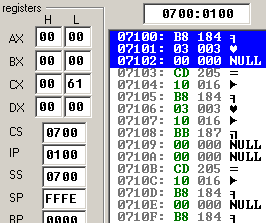 Assembler Visual Builder is a web-based Java applet that allows you to create an assembly language program and to simulate running the program. The simulator shows you the machine cycle - the fetch, decode, execute steps - as each assembly instruction is executed.
Assembler Visual Builder is a web-based Java applet that allows you to create an assembly language program and to simulate running the program. The simulator shows you the machine cycle - the fetch, decode, execute steps - as each assembly instruction is executed.
CPU Sim is an interactive Java-based CPU simulator for use in introductory computer organization classes. It allows users to design simple computer CPU's at the microcode level and to run machine-language or assembly-language programs on those CPU's through simulation. It can be used to simulate a variety of architectures, including accumulator-based, RISC-like, or stack-based (such as the JVM) architectures.
EASy68K is a 68000 Structured Assembly Language IDE. EASy68K allows you to edit, assemble and run 68000 programs on a Windows PC or Wine.
emu8086 is an 8086 microprocessor emulator with integrated assembler and tutorials for beginners. The emulator runs programs like the real microprocessor in step-by-step mode. It shows registers, memory, stack, variables and flags. All memory values can be investigated and edited by a double click. The instructions can be executed back and forward. emu8086 can create a tiny operating system and write its binary code to a bootable floppy disk. The software package includes several external virtual devices: robot, stepper motor, led display, and traffic lights intersection. Additional devices can be created.
Lia is a simple computer simulator and assembly editor written in pure Java. It enables you to write/edit/save your "assembly" files and then execute the code using the built-in simulator. A list representing the memory contents is available at all times so the programmer can see what is really happening. Full source code included.
 LogicSim allows you to design and simulate digital logic circuits with logic gates like AND, OR, FlipFlop, etc.
LogicSim allows you to design and simulate digital logic circuits with logic gates like AND, OR, FlipFlop, etc.
Logisim is an educational tool for designing and simulating digital logic circuits. Circuit layouts can be used as "subcircuits" of other circuits, allowing for hierarchical circuit design. (via David Gould)
MARS (MIPS Assembler and Runtime Simulator) is a lightweight interactive development environment (IDE) for programming in MIPS assembly language, intended for educational-level use with Patterson and Hennessy's Computer Organization and Design.
SPIM is a self-contained simulator that will run MIPS32 assembly language programs. It reads and executes assembly language programs written for this processor. SPIM also provides a simple debugger and minimal set of operating system services. SPIM does not execute binary (compiled) programs.
TOM Computer Simulator is designed for computer architecture and programming courses. TOM stands for Thoroughly Obedient Moron, and consists of a number of components each designed to teach the fundamentals of computing via simple interactions.
/misc | Apr 14, 2010
Memory lane #
Read Creative Computing, Compute!, and more at The Classic Computer Magazine Archive.
/misc | Apr 12, 2010
Grep is greedy; make it less so #
While editing an HTML file in TextWrangler, I needed to find and replace all occurrences of:
<span class="a">text</span>
This regex:
\<span class=\"a\"\>.*\<\/span\>
returned results like:
<span class="a">text</span><span class="b">more text</span>
Using a non-greedy quantifier (the question mark) returned the desired results:
\<span class=\"a\"\>.*?\<\/span\>
UPDATE 1: Wikipedia has more on lazy quantification: "... modern regular expression tools allow a quantifier to be specified as lazy (also known as non-greedy, reluctant, minimal, or ungreedy) by putting a question mark after the quantifier (e.g., <.*?>) ..."
UPDATE 2: To match multiline patterns in TextWrangler's grep, start the expression with (?s). According to the BBEdit-TextWrangler Regular Expression Cheat-Sheet m (multiline) "allows the grep engine to match at ^ and $ after and before at \r or \n" and s (magic dot) "allows . to match \r and \n".
/mac | Apr 11, 2010
Batch download YouTube videos from the command line #
UPDATE: See also Download videos from YouTube, Metacafe, Daily Motion, Vimeo, and more.
youtube-dl 2010.04.04: Written in Python; public domain license; excellent documentation; runs under *nix, OS X, Windows; works with latest YouTube changes. First attempt to batch download in bash returned an error:
$ youtube-dl.sh -o %(title)s.%(ext)s --batch-file urls.txt --best-quality --no-overwrites
-bash: syntax error near unexpected token `('
Just had to enclose the output template in single quotation marks:
$ youtube-dl.sh -o '%(title)s.%(ext)s' --batch-file urls.txt --best-quality --no-overwrites
The URLs for urls.txt were collected from a YouTube playlist webpage like so:
$ grep -o '/watch?v=.\{11\}' source.htm | sed 's/^/http:\/\/youtube.com/' | uniq > urls.txt
with sed prepending http://youtube.com to grep's output, and uniq culling the duplicates.
UPDATE 1: To specify the desired quality format, use -f #, where # is one of the format values shown in the first row below:
| fmt value |
5 |
6 |
34 |
35 |
18 |
22 |
37 |
38 |
83 |
82 |
85 |
84 |
43 |
44 |
45 |
46 |
100 |
101 |
46 |
102 |
13 |
17 |
| Default container |
FLV |
MP4 |
WebM |
3GP |
| Video |
Encoding |
Sorenson H.263 |
MPEG-4 AVC (H.264) |
VP8 |
MPEG-4 Visual |
| Profile |
– |
Main |
Baseline |
High |
3D |
– |
3D |
– |
| Resolution progressive |
224p |
270p |
360p |
480p |
360p |
720p |
1080p |
2304p |
240p |
360p |
520p |
720p |
360p |
480p |
720p |
1080p |
360p |
480p |
540p |
720p |
– |
| Resolution VGA |
WQVGA |
HVGA |
nHD |
FWVGA |
nHD |
WXGA |
WUXGA |
HXGA |
– |
nHD |
FWVGA |
WXGA |
WUXGA |
– |
– |
| Max width (pixels) |
400 |
480 |
640 |
854 |
640 |
1280 |
1920 |
4096 |
854 |
640 |
1920 |
1280 |
640 |
854 |
1280 |
1920 |
640 |
854 |
1920 |
1280 |
176 |
| Max height (pixels) |
240 |
270 |
360 |
480 |
360 |
720 |
1080 |
3072 |
240 |
360 |
520 |
720 |
360 |
480 |
720 |
1080 |
360 |
480 |
540 |
720 |
144 |
| Bitrate (Mbit/s) |
0.25 |
0.8 |
0.5 |
0.8–1 |
0.5 |
2–2.9 |
3–4.3 |
3.5–5 |
0.5 |
2-2.9 |
0.5 |
1 |
2 |
– |
– |
0.5 |
2 |
| Audio |
Encoding |
MP3 |
AAC |
Vorbis |
AAC |
| Channels |
1–2 |
2 (stereo) |
1 |
| Sampling rate (Hz) |
22050 |
44100 |
22050 |
| Bitrate (kbit/s) |
64 |
128 |
96 |
152 |
96 |
152 |
128 |
192 |
128 |
192 |
– |
(Above table is from Wikipedia's YouTube entry)
UPDATE 2: Video Backup Fusion offers an easy way to save all upload or playlist URLs to a text file (the download function seems to have broken as of May 2014). Source code and binaries available for Windows, Linux, and Haiku. You may want to uncheck "Show video thumbnails" in Settings and change the "Max. videos in list" value to 5000 (the maximum it will accept). Highlight all results, right click, select "Copy url(s)", and paste into your favorite text editor.
UPDATE 3: It's been almost 5 years since this post, but youtube-dl is still going strong, having just been updated yesterday (2015-03-28). Here are two more neat ideas from a HN thread:
- Download just the audio portion of a video: $ youtube-dl --extract-audio --ffmpeg-location /path/to/ffmpeg&ffprobe $URL
- Watch live streams without Adobe Flash Player: $ youtube-dl -o- $URL | mplayer -
/nix | Apr 11, 2010
Unpack / extract .MSI file contents #
MSI Unpacker extracts files from .MSI installer packages. I used it (along with Universal Extractor) to unpack the Debugging Tools for Windows (required for using Crash Reporter in ERD Commander 2005) as follows:
- Downloaded dbg_x86_6.7.05.1.exe
- Dropped dbg_x86_6.7.05.1.exe onto UniExtract.exe, which extracted dbg_x86.msi
- Dropped dbg_x86.msi onto MSIUnPack.vbs, which extracted the entire Debugging Tools for Windows directory
(Note: While UniExtract does have limited MSI support, it was unable to unpack dbg_x86.msi.)
/windows | Apr 07, 2010
Best organic Japanese tea source on the Net #
Just received our first order of matcha from Yuuki-Cha.com - very impressed with their fast service and exceptional tea. In addition to matcha, they carry sencha, gyokuro, genmaicha, etc, all of which are certified organic by JAS; some also carry USDA organic certification. If you're into Japanese tea, check them out.
/misc | Apr 01, 2010
Tiny command-line disk/partition apps for DOS/Windows #
For over ten years, Svend Olaf Mikkelsen has crafted a number of free, tiny CLI apps focused on partitions and data recovery, like:
- Findpart - Searches for lost FAT, NTFS, HPFS, BeOS and Linux ext2, ext3 and swap partitions. To search for reiserfs partitions, add "reiser" to the command line.
- FindNTFS - NTFS data recovery tool. Lists the content of an NTFS partition, or copies files.
- FindExt2 - Searches for Linux ext2 and ext3 superblocks and calculates possible partition location.
- ReadExt2 - ext2/ext3 recovery tool. Lists the content of an Ext2/3 partition, or copies files.
- Findword - Searches a disk for occurrences of a word or sentence.
- FindJPG - Attempts to copy JPG files without file system usage.
- FindDoc - Attempts to copy DOC and XLS files without file system usage.
/windows | Mar 31, 2010
Fix your Kindle's tiny fonts #
Kindle Optimizer - Digital imaging veteran fixes fonts for Amazon: Kindle 2.0.2 and 2.0.3 files | Kindle 2.3 files
/eink | Mar 31, 2010
Cropping PDFs #
Three scripts for cropping PDFs (especially useful for making PDFs easier to read on a Kindle):
Before and after screenshots via PDFCrop:
| Before | After |
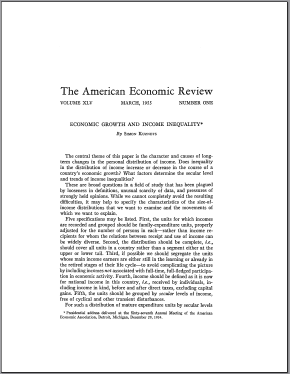 | 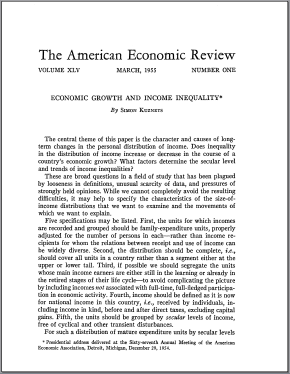 |
Updates
/nix | Mar 31, 2010
Remove PDF copy/print restrictions #
Free PDF Unlock Online Utility (Beta) quickly and easily unlocks PDFs up to 5MBs.
/misc | Mar 30, 2010
Store and read HTML files on the Kindle 2 #
UPDATE: Sorry, just realized that this is essentially a dupe of Reading HTML files on a Kindle from last year.
The long (and battery-draining) way:
- Copy .html files to a new top level directory, e.g., "html"
- Launch Basic Web (wireless must be enabled) and enter URL like file:///mnt/us/html/file.html
The short way:
- Change file extension from .html to .txt before copying to "documents" on the Kindle
- That's it! Just open your file from the Kindle home screen - basic formatting (h1, p, i, etc) is preserved.
(via Tomster)
/eink | Mar 27, 2010
Rob Reed builds a better Blosxom with Ode #
I first contacted Rob Reed last year while looking for a copy of his annotated Blosxom bundle (not to be confused with Frank Hecker's version). Rob quickly and kindly obliged, and also informed me of a new publishing platform he was working on called Ode,
- a single Perl script
- with content generated from plain text files
- and look/layout determined by standard (X)HTML and CSS.
Release 1.0 has just become available for download today.
I asked Rob for permission (which was graciously granted) to post some of the thoughts he has shared over the last few months via email (emphasis mine):
- On Blosxom: I'm a big believer in (the vision of) blosxom. In fact, as crazy as it may sound, blosxom played a part in my decision to go back to school to get a masters in computer science. Of course there was more to it than just blosxom, and it's certainly not necessary to get a degree in CS to understand blosxom, but I think blosxom is an important project, and I wanted to explore that idea. So, long story short, it's fair to say that Ode owes a lot to blosxom. Anyone who understands the why of blosxom will almost certainly get what Ode is all about.
- On Ode: The project's motto is "Ode is simple" with the qualification that "Simple means you know how it works". I wanted to do something that blurred the line between end user and developer by making Ode accessible to anyone who was interested. To that end in addition to the normal sort of documentation there's a narrative walk-through of the source code similar to what I did with blosxom but with more discussion about not just what the code is doing, but why. I put together a lot of other resources as well, including diagrams related to the flow of execution, and a bunch of other stuff.
- On Twitter: ... like inventing the telegraph after the telephone and insisting that its limitations somehow represent unique value.
- On Facebook: Ask yourself if you're comfortable handing over all of your content to a service that you have no control over for the luxury of wading through ads, and then hoping that they don't change the terms of service at a moment's notice in such a way that you're no longer comfortable with their policies ... Perhaps more important is the fact that we already have a web. If you're like me, you don't see the need to build a web on top of the web and put it in the hands of a single commercial entity. Something about that just doesn't feel like a step in the right direction.
- On hiring developers: I don't agree with most of what [name removed] has to say about what it takes to be a successful software developer (and what to look for when hiring developers). In fact, if I could invent a machine into which I could feed everything he's written about hiring developers and have it spit out the exact opposite, that advice is probably closer to how I'd do it. I'm a believer in loyalty, potential, personal responsibility, and shared ownership of projects, even in a professional setting. I also don't believe in tricking people into revealing to you whether they'll be good at the job you're interviewing them for; or testing as a substitute for getting to know people. I'm surprised at how invested companies are in hiring people who are good at getting hired, not people who will be good at the job they're being hired to do (and also who will be pleasant to be around for the next 1-10 years).
- On "social networking": The web has been social from the very beginning :) ... that gets to the heart of what ode is about. I wanted to put together a simple platform that would allow a user to experience the web as it was intended to be - a distributed, collaborative space where everyone is able to contribute (as well as consume). A "more than the sum of its parts" platform that plays well out on the open web. A tool for anyone who believes that permanence and substance are of primary importance.
/blosxom | Mar 25, 2010
Computing like it's 1989 #
Zach Perry kindly informs us of his recently launched Alternative Electronic Information Network (AEIN), a fee-based BBS that requires a proprietary Windows or DeskMate app to access. Normally such a service would not be mentioned in this space (especially with free and open options like Uncensored available), but the retro ANSI art and whimsical list of free additional benefits (DOS/Windows tech support by email, smoke alarm batteries, camera and computer parts, tree planting donation, etc) tipped the scales. Excuse me while I go grab a copy of TheDraw.
UPDATE: Just noticed this announcement on the homepage a week later:The AEIN is now transitioning to a free service. Members who purchased paid memberships will retain the benefits promised at the time they signed up. New users can click here to download the AEIN software. All extra benefits have been eliminated for new members, but users can still access a wide range of ad-free content; news, weather, recipes, reviews, computer tips, world time, technical information, etc. New development has come to an end, although news and weather updates will continue.
/windows | Mar 22, 2010
iText Express 3.4: TextEdit on steroids #
Japanese | English. 32 and 64 bit versions available, supports Panther through Snow Leopard, optional OgreKit plugin greatly improves search function. 3.3 review. Screenshot of ame ni mo makezu pasted into one of the included templates:
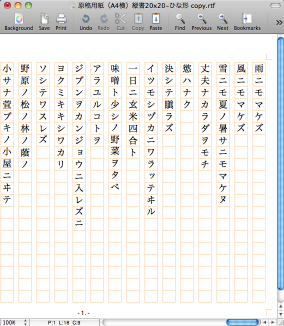
/mac | Mar 20, 2010
Automatically adjust color temperature of display based on time of day #
f.lux "makes your computer screen look like the room you're in, all the time. When the sun sets, it makes your computer look like your indoor lights. In the morning, it makes things look like sunlight again. Tell f.lux what kind of lighting you have, and where you live. Then forget about it. F.lux will do the rest, automatically."
Certainly seems to make backlit LCDs easier on the eyes in my testing. This should hold me over until Pixel Qi releases their DIY kit. Windows, Mac, and Linux versions available.
/misc | Mar 12, 2010
Random Data File Creator #
We've covered how to create empty files in Windows with fsutil. Random Data File Creator (RDFC) allows you to create binary files of any size filled with random numbers.
/windows | Mar 07, 2010
An embarrassment of riches #
Claus recently mentioned ImDisk Virtual Disk Driver and its author Olof Lagerkvist in such glowing terms that I had to have a look. In short, I was floored. Olof has crafted dozens of open source tiny apps, virtually all of which run under Windows 95 through 7 (some even under Windows 3.x!). Even better, he is one of the few Microsoft Visual C++ developers who shuns msvcrt.dll:
These binaries are compiled with the free version of Microsoft Visual C++. They are not linked with the standard C or C++ libraries that comes with this compiler, instead they are linked with a dynamic library I call minwcrt (Minimal Windows C Run-Time Library) linking them to crtdll.dll instead of msvcrt.dll. This makes them run in all versions of Win32 without additional dll files. This is also the reason why the exe files are very small. Source for this library is available as part of the source archive mentioned in the top of this document.
Here is just a smattering of the many apps available:
- joindomain [1.44K] Join a computer to a domain from the command line
- popdump [5.09K] Retrieves all messages from a POP3 mailbox and dumps them as eml files
- popman [5.34K] List/delete messages directly on POP server
- strarc [23.2K] Backup/archive tool that uses the same backup methods as the ntbackup or robocopy programs and thus backs up all information and meta data on an NTFS volume.
- synctime [2.8K] Synchronizes local computer time with nist.gov time servers
- regrepl [6.79K] Batch replace text in local or remote registry
/windows | Mar 07, 2010
OS X's popup Dictionary panel and Japanese #
Command+Control+D while hovering over a word displays a popup Dictionary panel in OS X. Pronunciation for English words is displayed in the medium grey title bar, but not for Japanese:
Anyone know of a fix or workaround? In the meantime, JEDict's web browser (built on WebKit) includes a drawer with pronunciation, definitions, etc.
/mac | Mar 07, 2010
Automatically insert furigana / ruby / rubi readings in Firefox #
Furigana Injector looks up the readings for kanji words and inserts them as furigana. Optionally install XHTML Ruby Support for rendering furigana above text instead of inline.
/misc | Mar 07, 2010
Gitso (remote support for Windows, Linux, OS X) updated to 0.6 #
Aaron Gerber kindly informs us of an update to the insanely awesome, open source, cross-platform remote support app that he and Derek Buranen (along with several other contributors) have continued to craft over the past several years, Gitso:
- Complete rewrite of processes
- Stop VNC Processes (Windows)
- Support loading remote hosts file
- Command line switches
- --dev
- --listen
- --connect IP
- --list list_file
- --version
- --help
- Man page (Linux)
- Support for .rpms
- Native VNC listener (OS X)
- Better process management, user gets notified if connection is broken
- Licensing updates (across the board)
- Many bug fixes
/misc | Feb 21, 2010
Tiny HDD activity monitors #
Especially useful for computers without HDD LEDs or for monitoring hard drive activity on remote machines:
- hdactmon.exe

- HDDMon.exe

- 16k
- Includes ASM source code
- Later version includes additional options and new icons:

- DriveGLEAM

- 88k
- Written in C, but does not include source code
- Optionally send output to parallel port or Scroll Lock LED on keyboard. Includes CPU and memory monitors.
All five have been bundled and uploaded here for posterity's sake.
/windows | Feb 21, 2010
Batch crop images with GIMP and ImageMagick #
- Backup your images!
- With GIMP's Rectangle Select tool, highlight area to crop and note values for Position and Size:
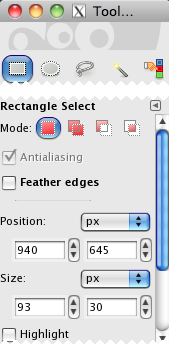
Position: 940, 645 | Size: 93, 30
- $ mogrify -crop 93x30+940+645 *.png
/nix | Feb 21, 2010
Connecting to Time Capsule from Windows 7 #
When connecting to a Time Capsule network share from Windows 7, you are prompted for a username and password. The username is "admin" and the password is (by default) whatever password you assigned your Time Capsule during setup. However, you will not be able to login without tweaking some security settings (just like this tip for Vista from 2007):
Start > Search box > secpol.msc > Local Policies > Security Options > "Network security: LAN Manager authentication level" > set to "Send LM & NTLM - use NTLMv2 session security if negotiated".
You may also need to uncheck both boxes under "Network security: Minimum session security for NTLM SSP based (including secure RPC) clients".
/windows | Feb 16, 2010
Using HFSExplorer under Windows 7 x64 #
HFSExplorer (a free alternative to MacDrive for reading Mac-formatted hard disks and disk images) would not detect HFS+ drives in Windows 7 x64 until changing the compatibility mode as follows: right click hfsexplorer.exe > Properties > Compatibility > check "Run this program in compatibility more for:" > select "Windows XP (Service Pack 2)" > click OK.
/windows | Feb 16, 2010
Back4Sure #
Ulrich Krebs, author of DbxConv (featured back in 2008), has crafted a simple backup program with one key feature missing from so many others: the ability to specify a target volume label instead of drive letter. Those who have struggled with trying to assign the same static drive letter to multiple devices in Windows will understand how helpful this is. My only suggestion for version 2 would be enabling backup of in-use files. Freeware for personal or business use, though there is an occasional donation nag screen.
🌱 Back4Sure v1 [694k] + Simple backup with optional filtering, compression, logging, desktop links for jobs, orphan file removal, and selection of destination based on volume label instead of drive letter. 📺
/windows | Feb 15, 2010
Delete multiple pages in a DjVu document with djvm #
djvm (a command line tool bundled with DjVuLibre), does not accept multiple pages or page ranges for the delete argument. Here are a few workarounds for deleting all pages in a range, even pages, or odd pages:
- Delete pages 1-42
for i in $(jot 42 1) ; do djvm -d file.djvu 1 ; done
- Delete pages 441-449
count=441 ; until [ $count -gt 449 ] ; do djvm -d file.djvu 441 ; count=`expr $count + 1` ; done
- Delete even pages 204 to 2
for (( COUNTER=204; COUNTER>=2; COUNTER-=2 )) ; do djvm -d file.djvu $COUNTER ; done
- Delete odd pages 329 to 105
for (( COUNTER=329; COUNTER>=105; COUNTER-=2 )) ; do djvm -d file.djvu $COUNTER ; done
Many thanks to DutchDaemon and s0xxx for their answers in this thread, and to SilentGhost for this answer on Stack Overflow.
/nix | Feb 15, 2010
Mojikyo Character Map #
The Mojikyo Character Map is a freeware application (bundled with the necessary TrueType fonts) that provides easy access to =~ 110,000 mainly Chinese characters:
- =~ 20,000 Chinese characters defined by Unicode (ISO 10646)
- =~ 50,000 Chinese characters from Morohashi Tetsuji's Dai Kan-Wa Jiten ("Comprehensive Chinese-Japanese Dictionary")
- Oracle bone script
- Siddham (North Indian script used for writing Sanskrit during the period ca 600 - 1200 CE)
- Japanese kana
- Chu Nom (an obsolete Vietnamese writing system that was used almost exclusively by the elites)
- Sui script (a pictographic writing system of the Sui language)
- Tangut script (a logographic writing system used for writing the extinct Tangut language of the Western Xia Dynasty)
- Symbols and more
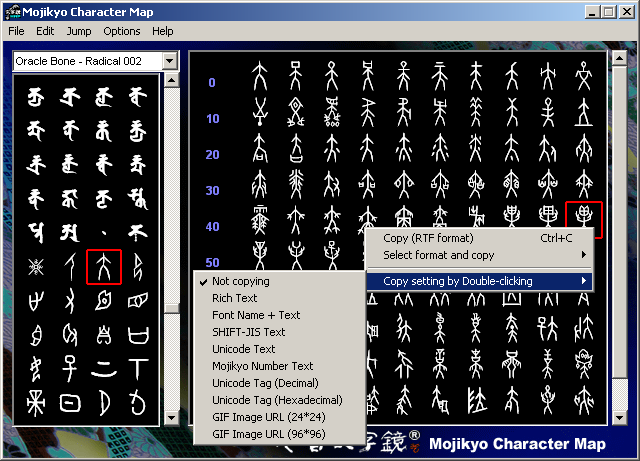
I stumbled onto the Mojikyo Character Map in a blog post by Jonathon Delacour from 2003 that alluded to 34 files totaling 52MB. Since the Mojikyo website and Stanford mirror no longer offer the files, I started poking around the Internet Archive cache of the Stanford mirror, which has all of the necessary files but one (found elsewhere - see below):
- Downloaded the compressed application, MOCM400.EXE, located in the CMAP subdirectory
- Batch downloaded (via Orbit Downloader) the 33 compressed fonts found in WINTTF
- MOJIKM5E.EXE was the only file not available, but I found a copy on the Chinese GNU/Linux Extensions website (which turns out to host all of the necessary files).
- I now had 34 files totaling =~ 52MB:
MOCM400.EXE 1,572,268 04/02/2002 09:46 AM 3180072780
MOJIKM01.EXE 2,250,455 07/19/2002 01:49 PM 2318009370
MOJIKM02.EXE 2,348,019 07/19/2002 01:49 PM 3277625571
MOJIKM03.EXE 2,323,762 07/19/2002 01:49 PM 4265428117
MOJIKM04.EXE 2,371,299 07/19/2002 01:49 PM 3923032980
MOJIKM05.EXE 2,384,680 07/19/2002 01:49 PM 2234262401
MOJIKM06.EXE 2,482,608 07/19/2002 01:49 PM 3820311365
MOJIKM07.EXE 2,316,520 07/19/2002 01:49 PM 226176670
MOJIKM08.EXE 2,531,450 07/19/2002 01:50 PM 2244807325
MOJIKM09.EXE 2,775,561 07/19/2002 01:50 PM 2001805475
MOJIKM0A.EXE 2,063,528 07/19/2002 01:50 PM 3828274974
MOJIKM0B.EXE 2,074,818 07/19/2002 01:50 PM 178146578
MOJIKM0C.EXE 1,770,878 07/19/2002 01:50 PM 2974162806
MOJIKM0D.EXE 1,986,658 07/19/2002 01:50 PM 2084838314
MOJIKM0E.EXE 2,153,982 07/19/2002 01:50 PM 3849468493
MOJIKM0F.EXE 2,715,471 07/19/2002 01:50 PM 2125653168
MOJIKM10.EXE 1,603,651 07/19/2002 01:50 PM 1683753854
MOJIKM11.EXE 376,114 04/02/2002 10:06 AM 3419606807
MOJIKM12.EXE 1,675,983 04/02/2002 10:06 AM 3778053224
MOJIKM13.EXE 683,293 04/02/2002 10:06 AM 2249996894
MOJIKM14.EXE 292,419 04/02/2002 10:06 AM 1234093088
MOJIKM15.EXE 253,070 04/02/2002 10:06 AM 2318227551
MOJIKM55.EXE 194,289 04/02/2002 10:06 AM 399366025
MOJIKM56.EXE 810,418 04/02/2002 10:06 AM 1533657018
MOJIKM57.EXE 1,706,312 04/02/2002 10:06 AM 2802977783
MOJIKM58.EXE 1,686,681 04/02/2002 10:06 AM 255553839
MOJIKM59.EXE 1,226,551 04/02/2002 10:06 AM 221434629
MOJIKM5A.EXE 473,245 04/02/2002 10:06 AM 2926850122
MOJIKM5B.EXE 1,603,179 04/02/2002 10:06 AM 3163789964
MOJIKM5C.EXE 1,648,109 04/02/2002 10:06 AM 137386859
MOJIKM5D.EXE 978,290 04/02/2002 10:06 AM 4273653570
MOJIKM5E.EXE 358,966 04/02/2002 10:06 AM 1539610454
MOJIKM66.EXE 2,197,871 04/02/2002 10:06 AM 4218732064
MOJIKM67.EXE 591,716 04/02/2002 10:06 AM 251927137
- Batch uncompressed with 7-Zip and removed unnecessary files, leaving 34 totaling =~ 94.4MB:
MOCHRMAP.exe 532,480 02/08/2002 04:00 AM 458313828
Mojikm01.TTF 3,815,992 06/20/2002 12:00 AM 2387683204
Mojikm02.TTF 4,112,612 06/20/2002 12:00 AM 2117129841
Mojikm03.TTF 4,127,344 06/20/2002 12:00 AM 1634353783
Mojikm04.TTF 4,234,524 06/20/2002 12:00 AM 4286314746
Mojikm05.TTF 4,426,808 06/20/2002 12:00 AM 845998767
Mojikm06.TTF 4,430,780 06/20/2002 12:00 AM 4162377448
Mojikm07.TTF 4,431,964 06/20/2002 12:00 AM 3159972071
Mojikm08.TTF 4,999,792 06/20/2002 12:00 AM 4102742411
Mojikm09.TTF 5,415,780 06/20/2002 12:00 AM 3747794663
Mojikm0A.TTF 3,707,676 06/20/2002 12:00 AM 3723578800
Mojikm0B.TTF 4,177,592 06/20/2002 12:00 AM 2228260563
Mojikm0C.TTF 4,080,532 06/20/2002 12:00 AM 3033408358
Mojikm0D.TTF 3,519,976 06/20/2002 12:00 AM 2079183546
Mojikm0E.TTF 3,496,484 06/20/2002 12:00 AM 2932782927
Mojikm0F.TTF 4,482,840 06/20/2002 12:00 AM 3892262837
Mojikm10.TTF 2,551,176 06/20/2002 12:00 AM 875814641
Mojikm11.TTF 694,136 10/24/2001 02:01 AM 931566581
Mojikm12.TTF 2,482,876 10/24/2001 02:02 AM 1225778174
Mojikm13.TTF 1,163,308 10/24/2001 02:02 AM 3841779345
Mojikm14.TTF 591,264 10/24/2001 02:01 AM 2458869305
Mojikm15.TTF 530,880 10/24/2001 02:02 AM 2522906767
Mojikm55.TTF 410,636 02/14/2002 02:10 AM 3210542770
Mojikm56.TTF 1,474,892 10/24/2001 02:01 AM 3142615718
Mojikm57.TTF 3,426,016 10/24/2001 02:01 AM 2234440663
Mojikm58.TTF 3,520,136 10/24/2001 02:01 AM 3854002523
Mojikm59.TTF 2,361,240 10/24/2001 02:01 AM 3428091862
Mojikm5A.TTF 981,012 10/24/2001 02:01 AM 1099258963
Mojikm5B.TTF 3,301,032 10/24/2001 02:01 AM 3743177567
Mojikm5C.TTF 3,705,536 10/24/2001 02:01 AM 3218894549
Mojikm5D.TTF 1,940,452 10/24/2001 02:01 AM 4040218154
Mojikm5E.TTF 752,000 10/24/2001 02:01 AM 1420675346
Mojikm66.TTF 3,951,240 02/14/2002 02:11 AM 4149409031
Mojikm67.TTF 1,141,180 02/14/2002 02:11 AM 2422714417
- Copied the TTF files to %WinDir%\Fonts
- Launched MOCHRMAP.exe
Two final notes: The University of Virginia website hosts what appears to be a slightly older version of the application and associated fonts. Also, OS X's Character Palette provides similar functionality as the Mojikyo Character Map, though it does not contain all of the same characters by default.
/windows | Feb 13, 2010
Using a local printer with Remote Desktop #
Setup remote printing over RDP:
1. Install printer driver on remote machine
Unless the remote machine already has a driver for the local printer, you will need to install it:
Windows XP: Printers and Faxes > File > Server Properties > Drivers > Add
Windows 7: Administrative Tools > Print Management > Print Servers > computer name (local) > right click Drivers > Add Driver...
Once the driver has been added, log off the remote machine
2. Enable printer access in client PC's Remote Desktop Connection
Remote Desktop Connection > Options > Local Resources > check "Printers" under Local Devices > Connect. The local printer becomes the default for programs running on the remote desktop.
3. Notes
/windows | Feb 10, 2010
Restore tab autocompletion in cmd.exe #
Head to
HKEY_CURRENT_USER\Software\Microsoft\Command Processor
and/or
HKEY_LOCAL_MACHINE\Software\Microsoft\Command Processor
(if the HKCU value is set, it overrides the HKLM value) and set the CompletionChar value to 9 (which is horizontal tab in ASCII).
/windows | Feb 07, 2010
Determine Windows XP Service Pack level from registry #
C:\>reg query "HKLM\Software\Microsoft\Windows NT\CurrentVersion" /v CSDVersion
Besides System Properties (sysdm.cpl), here are two other standard GUI apps that return the Service Pack level: winver.exe and winmsd.exe. Just launch from the Run dialog or a command prompt.
/windows | Feb 06, 2010
Outlook Express opens PDF attachments with wrong version of Adobe Acrobat #
While double clicking PDFs from within Windows Explorer opened them in Adobe Acrobat Reader 9 (the default PDF handler), double clicking PDF attachments from within Outlook Express opened them in Adobe Acrobat 6. This issue was resolved by changing the values of
HKEY_CLASSES_ROOT\AcroExch.Document.7\shell\Open\command
and
HKEY_CLASSES_ROOT\AcroExch.Document\shell\Open\command
to the path of the current version of Adobe Acrobat Reader:
"C:\Program Files\Adobe\Reader 9.0 Reader\AcroRd32.exe" "%1"
(Thanks to wimvh for digging up this fix)
/windows | Feb 06, 2010
Linux Mint 8 (Helena) - Add Firefox shortcut / launcher to Desktop #
This should really be simpler...
- Right click on Desktop and select "Create Launcher"
- Click the springboard icon at top left
- Enter the following path: /usr/share/pixmaps and then double click the Firefox icon
- Enter the values below:
- Type: Application
- Name: Firefox
- Command: firefox %u
- Comment: blank
- Click OK
/nix | Feb 06, 2010
Keynes is whack, yo. #
/misc | Jan 30, 2010
Batch convert HTML to PDF in OS X #
HTML files can be batch converted to PDF under OS X using a for loop and the virtually undocumented convert command (not the one from ImageMagick):
for file in *.html;do /System/Library/Printers/Libraries/convert -f $file -o $(basename -s ".html" "$file").pdf;done
/mac | Jan 24, 2010
HTML Tidy: Batch processing files #
HTML Tidy does not natively support wildcards in filenames (e.g., *.html), but batch processing in bash is possible with a simple for loop:
for f in *.html;do tidy -m -i $f;done
-m = modify original input files
-i = indent element content
(For a complete list of arguments, see the man page.)
/nix | Jan 24, 2010
Dell MFP 3115cn network scanning error: Network Not Ready 016-790 #
When connected to a network, the Dell 3115cn can send scans to a SMB share or FTP server. The setup process could be clearer, as evidenced by posts like these:
We resolved a "Network Not Ready 016-790" error message from the panel: SCAN > Scan Defaults > Network Port > changed interface from the unused wireless to wired. This can also be done from the web interface: Printer Settings > Printer Settings > Scan Defaults > Network Port. While you're there, here are the SMB settings that worked for us:
- Address Book > Server Address > Create
- Name: enter a short, friendly name
- Server Type: SMB
- Server Address: use static IP of SMB server
- Server Port Number: 139
- Login Name and Login Password: account which exists on SMB server and has access to the shared directory
- Share Name: name of shared directory
- Server Path: blank
/misc | Jan 23, 2010
Two newly-listed Palm OS apps #
- chmod v2.1 [8k] Calculates octal notation of *nix file system permissions 📺
- DiddleBug 2.90.7 [155k] {S} Sticky notes / sketch pad app with built-in alarm 📺
/palm | Jan 23, 2010
Hide desktop icons #
Unclutter your OS X desktop instantly (for taking screenshots, giving presentations, faking fastidiousness, etc.):
- Camouflage 1.25 [1126k] Hides desktop icons, leaving nothing visible but the wallpaper. 📺
- Screenshot Helper 2.0 [76k] Shows a full screen window with a solid color or a desktop picture so that you can take clean screenshots. 📺
/mac | Jan 17, 2010
Quick contact sheets in OS X #
Macworld explains how to quickly create an image contact sheet in Leopard:
Open folder in Finder > Command-A > Command-Option-Y > click Index Sheet button > Command-Shift-3.
However, since images which scroll off the screen are not captured, this little app may be a better option:
ContactSheetMaker 1.0.1 [53k] {S} Simple, standalone application to create contact sheet image files from folders of images. 📺
/mac | Jan 13, 2010
Google does the right thing #
A new approach to China: "We have decided we are no longer willing to continue censoring our results on Google.cn, and so over the next few weeks we will be discussing with the Chinese government the basis on which we could operate an unfiltered search engine within the law, if at all. We recognize that this may well mean having to shut down Google.cn, and potentially our offices in China."
UPDATE 1: Apparently this was all talk, no walk: Google co-founder: Maybe we'll stay in China after all - A month after storming the moral high-ground over China's hacking activities, Sergey Brin has declared the firm is happy to get off its high horse and kick its heels in the country a little longer.
UPDATE 2: Finally some real action: So earlier today we stopped censoring our search services - Google Search, Google News, and Google Images - on Google.cn. Users visiting Google.cn are now being redirected to Google.com.hk, where we are offering uncensored search in simplified Chinese, specifically designed for users in mainland China and delivered via our servers in Hong Kong.
/misc | Jan 13, 2010
Cannot uninstall ZoneAlarm: "missing a necessary root certificate" #
Simply set the system clock back to 2007 or 2008 and relaunch uninstaller to bypass the root certificate error message.
/windows | Jan 12, 2010
Newly added icon editor for OS X #
Iconographer X 2.5 [891k] Full-featured icon editor. Formerly shareware, now free (registration name = "Iconographer is now free", code = "HG066414"). 📺
/mac | Jan 04, 2010
Detect the character encoding of a file #
The aforementioned Perl module Unicode::Japanese includes ujguess, which attempts to detect the character encoding of a given file. The Unix program file is often suggested on forums and the like for this purpose, but it only returns the file type, not the encoding. Here's an illustration of the difference, using a Shift JIS-encoded file:
$ file foo
foo: UTF-8 Unicode text, with no line terminators
$ ujguess foo
sjis
and an EUC-encoded one:
$ file bar
bar: ISO-8859 text, with CRLF line terminators
$ ujguess bar
euc
/nix | Jan 03, 2010
Create a universal Windows 7 install disc #
UPDATE: See Slipstream Windows 7 SP1 convenience rollup into a universal x86/x64 installer.
Setting aside the absurdity of offering a confusing array of editions, Microsoft made technicians' jobs slightly easier by including all editions of Vista (Home Premium, Ultimate, etc) on a single 32 or 64 bit disc (though both versions can apparently be combined with a bit of effort). This allowed techs to carry one or two discs at most and still be able to install whatever edition was required. Windows 7 changes all that; while the various and sundry editions are all tantalizingly included on the disc, a tiny configuration file (ei.cfg) forces a specific edition to be installed. Thankfully, Kai Liu has created win7utils to circumvent this irritation:
- "The Windows 7 ISO Image Edition Switcher is a set of small binary patches (and a tool to apply these patches) that will convert an official Windows 7 ISO disc image into an official Windows 7 ISO disc image of another edition. The resulting ISO images are bit-for-bit identical with those posted on MSDN or TechNet, and their SHA-1 hashes should match the official hashes posted by Microsoft."
- "The ei.cfg Removal Utility is a simple tool that will remove the ei.cfg from any Windows 7 ISO disc image, thereby converting the image into a 'universal disc' that will prompt the user to select an edition during setup. This tool works by toggling the deletion bit in the UDF file table, eliminating the need for unpacking and rebuilding the ISO, which means that this is extremely fast (the process of patching the ISO to remove ei.cfg takes only a fraction of a second), and the process is easily reversible (running the utility on a disc image patched by this utility will restore the disc image to its original state)."
(via Mike Mills who found it on Lifehacker which credited Technibble which attributed the link to a forum member named AtYourService - whew!)
/windows | Jan 03, 2010
Convert numbers and spaces from full-width (double-byte) to half-width (single-byte) #
Within filenames (using Bash, Perl, and Unicode-Japanese-0.47):
- $sudo perl -MCPAN -e shell
- cpan> install Unicode::Japanese
- Save the following script (adapted largely from togdon's example) as full2half.sh and make it executable (chmod u+x):
#!/bin/bash
for file in *;do
newfile=$(echo $file | perl -MUnicode::Japanese -e'print Unicode::Japanese->new(<>)->z2h->get;')
test "$file" != "$newfile" && mv "$file" "$newfile"
done
- cd to desired directory and run script:
$ /path/to/full2half.sh
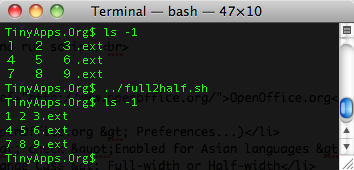
Within file contents (using OpenOffice.org):
- Tools > Options... (in OS X it's OpenOffice.org > Preferences...)
- Language Settings > Languages > check "Enabled for Asian languages" > OK
- Highlight text > Format > Change Case > Full-width or Half-width
/nix | Jan 02, 2010
Blue screen when booting into Safe Mode on malware-infected machine #
may be resolved by restoring the SafeBoot registry keys. You may need to create the SafeBoot registry key with special permissions protecting it from deletion.
See also: Change msconfig boot options from command prompt via boot disc.
Tags: BSOD, Safe Mode, STOP 0x0000007B
/windows | Jan 01, 2010
RSS | Archives























